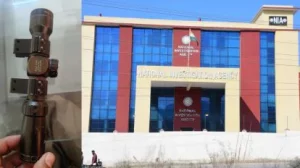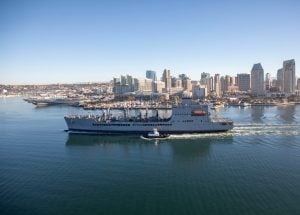The drainage system of India plays a vital role in shaping the country’s geographical and economic landscape. It refers to the network of rivers and their tributaries that drain water from various regions into seas, oceans, or inland basins. Understanding India’s drainage pattern is essential for NDA and CDS aspirants as it forms a core part of Indian geography.
NDA & CDS 1 2026 Exam Indian Geography – Drainage
1. Meaning of Drainage
The term drainage refers to the flow of water through well-defined channels or rivers. The area drained by a river and its tributaries is known as a drainage basin. Depending on the outlet point, drainage systems can be classified as:
- Exorheic (Open Drainage): Rivers that flow into the sea or ocean.
Example – Ganga, Brahmaputra, Mahanadi. - Endorheic (Closed Drainage): Rivers that do not reach the sea but end in inland lakes or deserts.
Example – Luni River in Rajasthan.
2. Major Drainage Systems of India
India’s rivers are broadly divided into two main drainage systems:
A. The Himalayan Rivers
These rivers originate from the Himalayas and are perennial, fed by both rainfall and glaciers. They carry a huge amount of water and silt, forming fertile plains.
Major Himalayan Rivers:
- The Indus River System
- Origin: Tibetan Plateau near Lake Mansarovar.
- Flows through: Ladakh → Pakistan → Arabian Sea.
- Major Tributaries: Jhelum, Chenab, Ravi, Beas, Sutlej.
- The Ganga River System
- Origin: Gangotri Glacier (as Bhagirathi).
- Main Tributaries: Yamuna, Ghaghara, Gandak, Kosi (from north); Son, Chambal, Betwa, Ken (from south).
- Joins: The Bay of Bengal.
- The Brahmaputra River System
- Origin: Chemayungdung Glacier (Tibet) – called Tsangpo there.
- Enters India: Arunachal Pradesh (as Dihang).
- Joins: Ganga in Bangladesh to form the world’s largest delta – the Sunderban Delta.
B. The Peninsular Rivers
These rivers are older, non-perennial, and mostly rain-fed. They flow through hard rocks and have shorter courses compared to Himalayan rivers.
Major Peninsular Rivers:
- East-Flowing Rivers (drain into Bay of Bengal)
- Godavari: Largest peninsular river, also called Dakshin Ganga.
Origin – Nasik, Maharashtra. - Krishna: Originates from Mahabaleshwar in Maharashtra.
- Kaveri: Originates from Brahmagiri Hills in Karnataka.
- Mahanadi: Originates in Chhattisgarh.
- Godavari: Largest peninsular river, also called Dakshin Ganga.
- West-Flowing Rivers (drain into Arabian Sea)
- Narmada: Origin – Amarkantak Plateau (Madhya Pradesh). Flows through a rift valley between the Vindhya and Satpura ranges.
- Tapi (Tapti): Origin – Satpura Hills.
- Mahi & Sabarmati: Flow through Rajasthan and Gujarat.
3. Important River Basins in India
| River Basin | Area (sq km) | Major States Covered |
|---|---|---|
| Ganga Basin | 8.6 lakh | Uttarakhand, UP, Bihar, WB |
| Godavari Basin | 3.1 lakh | Maharashtra, Telangana, AP |
| Krishna Basin | 2.6 lakh | Maharashtra, Karnataka, AP |
| Indus Basin | 3.2 lakh | J&K, Himachal, Punjab |
| Brahmaputra Basin | 1.9 lakh | Assam, Arunachal Pradesh |
4. Drainage Patterns in India
Drainage patterns describe how rivers and streams are arranged in an area. The main types are:
- Dendritic Pattern: Tree-like pattern; seen in the Ganga system.
- Radial Pattern: Streams flow outward from a central point; seen in rivers from the Amarkantak Hills.
- Centripetal Pattern: Rivers flow inward to a central depression; seen in Rajasthan (Luni Basin).
- Trellis Pattern: Tributaries join the main river at right angles; seen in the Chambal region.
5. Inland Drainage in India
In arid regions of Rajasthan, several rivers like the Luni, Ghaggar, and Saraswati (ancient river) do not reach the sea. They either disappear into the sand or form inland lakes like Sambhar Lake and Didwana Lake.
6. Importance of Indian Rivers
- Provide irrigation and drinking water.
- Support hydropower generation.
- Facilitate navigation and trade.
- Contribute to agriculture and fertile plains.
- Maintain ecological balance and biodiversity.
7. Major River Projects in India
| Project | River | State |
|---|---|---|
| Bhakra Nangal Dam | Sutlej | Himachal Pradesh |
| Hirakud Dam | Mahanadi | Odisha |
| Nagarjuna Sagar | Krishna | Telangana |
| Sardar Sarovar | Narmada | Gujarat |
| Tehri Dam | Bhagirathi | Uttarakhand |
8. Key Facts for NDA & CDS 2026 Exam
- Longest River in India: Ganga
- Largest Peninsular River: Godavari
- River Forming Delta: Ganga-Brahmaputra
- River Forming Estuary: Narmada, Tapi
- River Known as Dakshin Ganga: Godavari
- World’s Largest Delta: Sunderban Delta



















